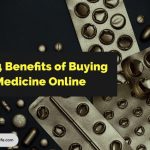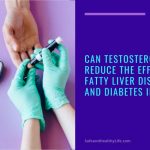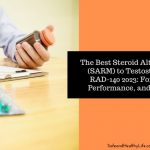
Image Source: Pixabay
What is Traditional Medicine?
Traditional medicine has been practiced for thousands of years by many different cultures including African, Chinese, and Indian. One of the oldest medical traditions is known as Ayurveda, which was developed in India more than 5,000 years ago. Ayurveda focuses on using diet, herbs, meditation, and yoga to promote good health. It is also used in the prevention and treatment of many diseases, illnesses, and imbalances in the body. Ayurveda is considered to be a holistic medicine, where the body and mind are seen as a whole.
Ayurvedic medicine is still used around the world, even in Western cultures where Ayurveda is becoming more and more accepted as a safer option than many medical treatments in the standard medical system. Even though Ayurveda medicine is available without a prescription, a qualified Ayurvedic practitioner is still needed to interpret what herbal blends and remedies are used to treat each medical condition.3
Herbs, plants, and mineral substances are used in Ayurveda to protect the body and mind from ill health and to treat certain medical conditions. Each substance is carefully chosen for maximum effect. For some treatments, plants and herbs are used on their own. Other preventions and treatments require a blend of two or more plants.4
In this article, we’ll take a closer look at how low testosterone levels, decreased libido, and sexual dysfunction in men may benefit from traditional medicine. As well, Ayurveda medicine may be used to treat infertility and low libido in women.
Reasons to Boost Testosterone & Libido
As a natural part of the aging process, testosterone serum in men begins to decline. They may start to experience symptoms that include a change in their normal sleeping patterns and the onset of sleep apnea. Many men notice weight gain and an increase in body fat. They may also notice decreased energy levels which makes it harder for them to exercise without feeling fatigued much sooner than when they were younger.5
A recent study on men between the ages of 40 and 70 showed that 52% reported some degree of sexual dysfunction, such as low libido. As men get older, hormone levels decrease, particularly testosterone which is important for optimum sexual health. A 2001 study revealed that 20% of men over the age of 60 have testosterone levels that are below normal. This increased to 50% for men over the age of 80.
Men with low levels of testosterone are at risk for a variety of medical conditions. This can include decreased libido, erectile dysfunction, feeling fatigued, irritability, and weakened muscle mass. Standard Western medicine treats low testosterone by boosting levels with testosterone replacement therapy (TRT), however, this treatment may come with significant risks, such as cardiovascular disease and prostate cancer. Due to these risks, many men opt not to take part in any drug treatment that may or may not increase their testosterone levels.
Instead of relying on Western treatments, more men are turning to traditional medicine to increase testosterone levels and to regulate their sexual health. There are some common Ayurvedic ingredients that traditional medicine practitioners turn to when treating men for sexual and fertility-related issues.
Common Ingredients
There is evidence that some of the herbs and plants used in traditional medicine may help to naturally boost testosterone levels in men and improve infertility in both men and women. This includes the following Ayurveda ingredients, which are all found in the natural testosterone support supplement DS Red Six:
Epimedium
Epimedium is a weed native to China and Korea. Also known as horny goat weed, it’s commonly used in traditional medicine in the treatment of sexual dysfunction and to promote sexual health. There is some evidence that epimedium may improve testosterone levels, which can help to boost sexual libido in men.9
Tribulus Terrestris
Tribulus Terrestris is a leafy plant commonly found in India and the Middle East. Used in Ayurvedic medicine, this plant is used as an aphrodisiac to improve sexual problems in men, such as erectile dysfunction. Research shows that Tribulus Terrestris may also help boost testosterone levels and relieve symptoms of fatigue.10,11
Tongkat Ali
Tongkat Ali, also known as Malaysian ginseng, is an herb that is native to Malaysia. It is used in traditional medicine as an aphrodisiac. Research on aging men shows that after one month of taking Tongkat Ali, the testosterone levels of 71.7% had increased to almost normal levels. When used in Ayurvedic medicine, Tongkat Ali may help boost testosterone levels and improve male libido.12,13
Stinging Nettle
Stinging nettle has long been used in traditional medicine to treat infertility in women. It may also increase levels of free testosterone. Free testosterone is testosterone that is available in the blood and not currently being used and depleted by SHBG (sex hormone binding globulin). Ayurvedic medicine also makes use of stinging nettle to promote sexual health in men by stimulating libido.14,15,16
Saw Palmetto
Saw palmetto is commonly used in Ayurvedic medicine. Saw palmetto is extracted from the berries of the North American dwarf palm. It is traditionally used to increase testosterone serum levels. Studies show that it may also increase fertility in both men and women.17,18,19
Does Traditional Medicine Really Work?
Traditional medicine has been used for thousands of years in the treatment of both male and female dysfunction, such as low testosterone and infertility. Promising studies done on the Ayurvedic ingredients in this article show strong anecdotal evidence that traditional medicine has a high success rate.
Western drugs and treatments have limited success and often come with risky side effects that contradict what they’re intended to treat. Even though there is a lack of overwhelming clinical evidence that traditional medicine works, Ayurvedic medicine has successfully been treating and promoting sexual health for over 5,000 years.20
Experts on traditional medicine, as well as practitioners, have often avoided in-depth clinical research of Ayurvedic practices and treatments. As Western cultures continue to look for alternatives to Western medicine we’ll see more research into the Ayurveda approach to health, including sexual health.3
About The Author:
Stacey Smith is the freelance health writer. She is passionate to write about women’s health, dental health, diabetes, endocrinology and nutrition and provide in-depth features on the latest in health news for medical clinics and health magazines.
References:
- Che, CT. & George, V. (2017). Chapter 2 – Traditional Medicine. Pharmacognosy: Fundamentals, Applications, and Strategies: 15-30. Retrieved on October 10, 2018, from https://www.sciencedirect.com/science/article/pii/B9780128021040000020
- Narayanaswamy, V. (1981). Origin and development of Ayurveda (a brief history). Anc Sci Life. 1(1): 1-7. Retrieved on October 10, 2018, from https://www.researchgate.net/publication/224897700_Origin_and_development_of_ayurveda_a_brief_history
- Chandra, S. (2016). Ayurvedic research, wellness, and consumer rights. J Ayurveda Integr Med. 7(1): 6-10. Retrieved on October 10, 2018, from https://www.ncbi.nlm.nih.gov/pmc/articles/PMC4910573/
- Kumar, S. & Dobos, GJ. (2017). The Significance of Ayurvedic Medicinal Plants. J Evid Based Contemporary Altern Med. 22(3). Pharmacognosy: Fundamentals, Applications, and Strategies: 15-30. Retrieved on October 10, 2018, from https://www.ncbi.nlm.nih.gov/pmc/articles/PMC5871155/
- Tsujimura, A. (2013). The Relationship between Testosterone Deficiency and Men’s Health. World J Mens Health. 31(2): 126.135. Retrieved on October 10, 2018, from https://www.ncbi.nlm.nih.gov/pmc/articles/PMC3770847/
- Kotta, S. & Ansari, SH. (2013) Exploring scientifically proven herbal aphrodisiacs. Pharmacogn Rev. 7(13): 1-10. Retrieved on December 04, 2017 from https://www.ncbi.nlm.nih.gov/pmc/articles/PMC3731873/
- Stanworth, R. & Hugh-Jones, J. (2008) Testosterone for the aging male; current evidence and recommended the practice. Clin Interv Aging. 3(1): 25-44. Retrieved on December 04, 2017 from https://www.ncbi.nlm.nih.gov/pmc/articles/PMC2544367/
- Osterberg, EC. & Bernie, AM. (2014). Risks of testosterone replacement therapy in men. Indian J Urol. 30(1): 2-7. Retrieved on October 10, 2018, from https://www.ncbi.nlm.nih.gov/pmc/articles/PMC3897047/
- Kuang, AK. & Chen, JL. (1989). [Effects of yang-restoring herb medicines on the levels of plasma corticosterone, testosterone, and triiodothyronine]. Zhong Xi Yi Jie He Za Zhi. 9(12): 737-8, 710. Retrieved on October 10, 2018, from https://www.ncbi.nlm.nih.gov/pubmed/2624991
- Pokrywka, A. & Obminski, Z. (2014). Insights into Supplements with Tribulus Terrestris used by Athletes J Hum Kinet. 41: 99-105. Retrieved on October 10, 2018, from https://www.ncbi.nlm.nih.gov/pmc/articles/PMC4120469/
- Chhatre, S. & Nesari, T. (2014). Phytopharmacological overview of Tribulus Terrestris. Pharmacogn. 8(15): 45-51. Retrieved on October 10, 2018, from https://www.ncbi.nlm.nih.gov/pmc/articles/PMC3931200/
- Erasmus, N. & Solomon, MC. (2012) Effect of Eurycoma longifolia Jack (Tongkat Ali) extracts on human spermatozoa in vitro. Andrologia. 44: 301-314. Retrieved on December 04, 2017 from http://onlinelibrary.wiley.com/doi/10.1111/j.1439-0272.2012.01282.x/abstract
- Tambi, MI. & Imran, MK. (2012). Standardized water-soluble extract of Eurycoma longifolia, Tongkat Ali, as a testosterone booster for managing men with late-onset hypogonadism? Andrologia. Suppl 1: 226-30. Retrieved on October 10, 2018, from https://www.ncbi.nlm.nih.gov/pubmed/21671978
- Edime, T. & Arica, SG. (2010). Use of complementary and alternative medicines by a sample of Turkish women for infertility enhancement: a descriptive study. BMC Complement Altern Med. 10: 11. Retrieved on October 10, 2018, from https://www.ncbi.nlm.nih.gov/pmc/articles/PMC2853488/
- Huat-Chye, PL. (2006) Traditional Asian folklore medicines in sexual health. Volume 22 – Issue 3: 241-245. Retrieved on December 04, 2017 from http://www.indianjurol.com/article.asp?issn=0970-1591;year=2006;volume=22;issue=3;spage=241;epage=245;aulas
- Li, C. & Ford, ES. (2010) Association of Testosterone and Sex Hormone–Binding Globulin With Metabolic Syndrome and Insulin Resistance in Men. Diabetes Care. 33(7): 1618-1624. Retrieved on December 04, 2017 from https://www.ncbi.nlm.nih.gov/pmc/articles/PMC2890370/
- Gunnels, TA. &Bloomer, RJ. (2014) Increasing Circulating Testosterone: Impact of Herbal Dietary Supplements. J Plant Biochem Physiol. 2:130. Retrieved on January 26, 2018, from https://www.omicsonline.org/open-access/increasing-circulating-testosterone-impact-of-herbal-dietary-supplements.2329-9029.1000130.php?aid=28009
- Suzuki, M. & Ito, Y. (2009) Pharmacological effects of saw palmetto extract in the lower urinary tract. Acta Pharmacol Sin. 30(3): 271-281. doi: 10.1038/aps.2009.1
- Bardaweel, SK. (2014). Alternative and antioxidant therapies used by a sample of infertile males in Jordan: a cross-sectional survey. BMC Complement Altern Med. 14: 244 Retrieved on October 10, 2018, from https://www.ncbi.nlm.nih.gov/pmc/articles/PMC4223394/
- Kotta, S. & Ansari, SH. (2013) Exploring scientifically proven herbal aphrodisiacs. Pharmacogn Rev. 7(13): 1-10. Retrieved on December 04, 2017 from https://www.ncbi.nlm.nih.gov/pmc/articles/PMC3731873/


![[Infographic] The Health Boosting Benefits Of Pets Health-Boosting-Benefits-Of-Pets](https://www.safeandhealthylife.com/wp-content/uploads/2023/10/Health-Boosting-Benefits-Of-Pets-1-150x150.webp)

